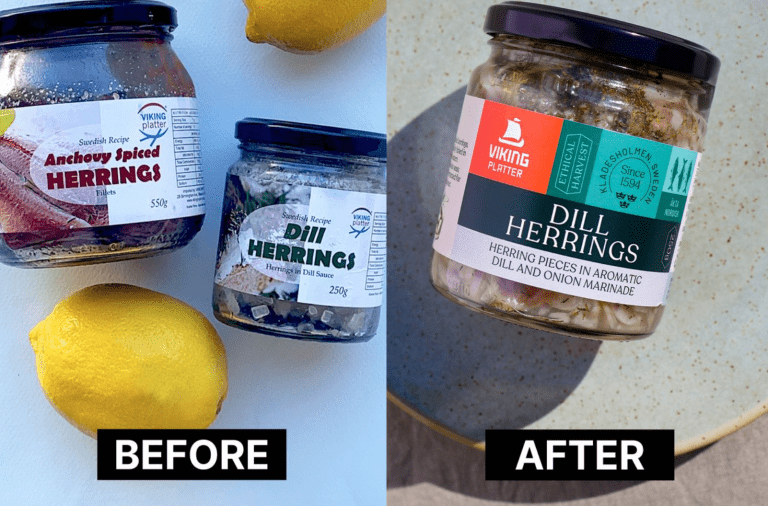
This post is brought to you by Stephanie Oley | The Offices
So you’re considering a rebrand for your food or beverage brand. Well, the first thing your
creative agency should ask is ‘why’.
That’s because the best rebrands aren’t just an outfit change. They represent a strategic
business shift, such as communicating an important change or correcting a misperception. The
physical rebrand is the final step to take after addressing these.
If you are eyeing a rebrand, here’s our take on how to approach it before the next big market
change hits:
1. Be clear on the problem you’re trying to solve.
Before rebranding, assess the problem or opportunity at hand. Is your product getting
crowded out by competitors? Is it losing relevance to customers? Or is there a promising
new market or demographic emerging? The Coles Finest brand refresh of 2024 sought to tap into the zeitgeist of demand for premium affordable groceries 1 – a strategy that’s paying off. By contrast, SPC’s corporate rebrand of 2020 alone wasn’t enough to change customer perception. That’s more likely to happen in the wake of SPC’s merger and leadership changes of 2024, which may yet validate their ambitions to be a global leader in food.
2. Rebranding doesn’t mean ‘change everything’
Understand the difference between a refresh and a rebrand.
Established brands refresh every few years, modifying select elements only. The recent Ribena refresh stays true to its most recognisable assets, brightening and enlarging these mainly to boost shelf presence. Sometimes a more comprehensive change is needed, and this is the rebrand. Our rebrand for Viking Imports embraced an opportunity: give its fine international products the elevated image they deserved. The work also paved the way for future product growth, with clearer distinctions between Viking’s organic and everyday lines. Determine the strategic challenge to address and map out the steps to reach that goal – along with the brand assets that absolutely must remain unchanged.
3. Be equal parts strategic, visual and verbal.
A good rebrand goes much deeper than visual assets such as logos, colours and
iconography. Real impact comes from the less-visible aspects, such as clearly defined
audiences, a strong positioning statement and distinctive language.
Oatly’s rebrand of 2013 remains a masterclass in this type of branding: a clearly
articulated belief system, dryly humorous language that mocks the establishment, and
resonance with customers who firmly reject dairy milk. It’s this strategic platform, rather
than visuals alone, that creates infinite scope for marketing.
4. Start the process internally, then test outwards.
Change is uncomfortable, and a rebrand can meet with widespread resistance – from its
board to the business partners, customers and wider community. Plan a staged and
consultative approach, aligning stakeholders to agree on the reason for the update and
the activities required. Woolworths made an array of strategic internal changes as part of
its ‘Fresh Food People’ rebrand of 2012, long before that green logo or jingle saw light of
day. Once your creative team starts developing the new assets, test and refine them internally before launching. But don’t over-adjust. Not all opinions will be valid and there will always be detractors.
5. Good brands are gold for PR and marketers.
A good brand will set the entire tone of your PR and marketing materials. It’ll let your
agency know what’s ripe for storytelling and where to educate further. It’ll clarify whether
to seek promotional tie-ins with a destination (like Goulburn Valley did), a kids’ TV
character (Arnott’s with Bluey), or the F1 racing franchise (as KFC has done). It’ll determine whether to promote on TikTok or trade fairs, outdoor or on-air media, in store or online. And so much more. Plan a soft launch that educates internal stakeholders, and a teaser campaign to get customers expecting change. Then launch in full across socials, media and advertising when all the assets are ready to go. A rebrand or refresh can be marketing gold for a business. The key is to do it strategically and for all the right reasons.
The Offices is a Sydney-based creative studio specialising in strategy, branding and packaging
for food and beverage.

Share this